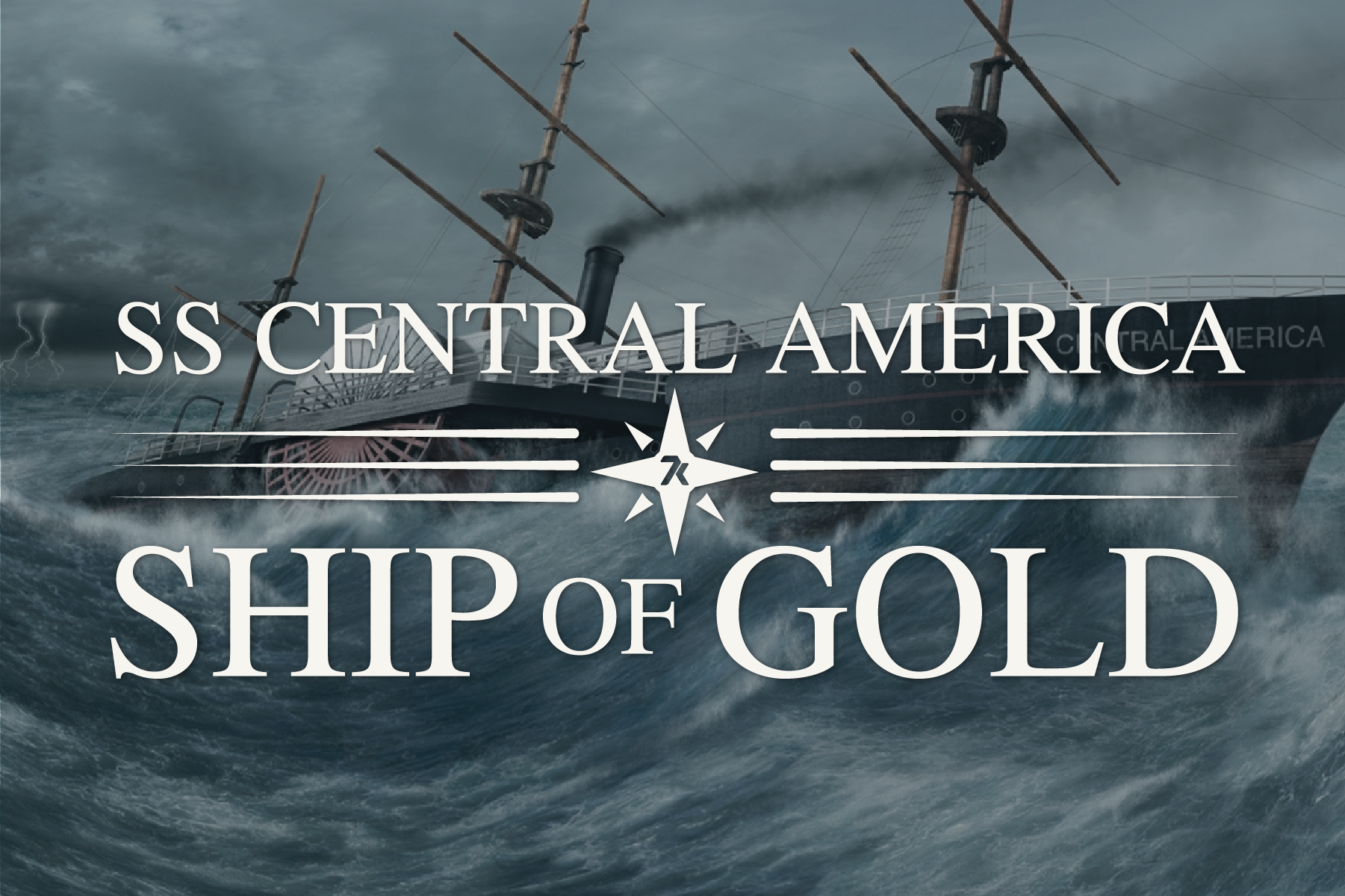The SS Central America: America’s Lost Treasure.
In 1857, a group of passengers boarded the SS Sonora in San Francisco. They were accompanied by their most prized possessions, and in many cases that was gold. Spoils from the Gold Rush of 1849 had attracted thousands to the West, and California had become the official 31st state, nicknamed–a little obviously–The Gold State. Its gold and silver quickly became imperative to the nation’s economy. In order to deliver large gold shipments swiftly to the U.S. banking system, the vast network of the U.S. Mail steamships were utilized to deliver mail, gold, and passengers from California to New York. This was pre-Panama Canal, so the first leg of the journey to the thinnest point in Panama took place on one ship, then a hop, skip, and a short train ride across the country waited the second ship, ready to continue on to New York.
For the passengers who began their journey on the SS Sonora, their second voyage was set aboard the SS Central America. Greeted by the capable and brave Captain William Lewis Herndon upon arrival, no one would have suspected that this ship, in its fourth year of service and having sailed the same route roundtrip forty-three times, would deliver most of them to an early, watery grave.
The sinking of the SS Central America was the worst ocean disaster in a time of peace in the United States’ history. Four hundred and twenty-five passengers and crew died in the tragic accident, leaving only one hundred and fifty-three survivors. The loss of not only the citizens, but the 9.1 tons of gold and silver that the ship carried was a devastating blow to the country. At the time, the technology needed to find and recover the ship was impossible.
In 1977, an ocean engineer named Tommy Thompson took an interest in the mystery of the SS Central America. He began to collect data, reach out to experts for opinions, and received financial backing for an expedition by 1986. Using the money, Thompson developed the technology that would allow the SS Central America to be found: NEMO, a Remotely Operated Vehicle built to withstand deep ocean pressure of up to 4,000 lbs per square inch with the ability to carefully recover and preserve anything it could find amongst shipwrecks. A combination of NEMO, search theory, and MARC Sonar allowed Tommy Thompson and his team of scientists and researchers to find the SS Central America and to finally recover what the ocean had stolen over 100 years before.
7k is excited to announce a rare opportunity to own a piece of the history that is the SS Central America. Stay tuned to learn the whole story about the “Ship of Gold” and its recovery from the deep.
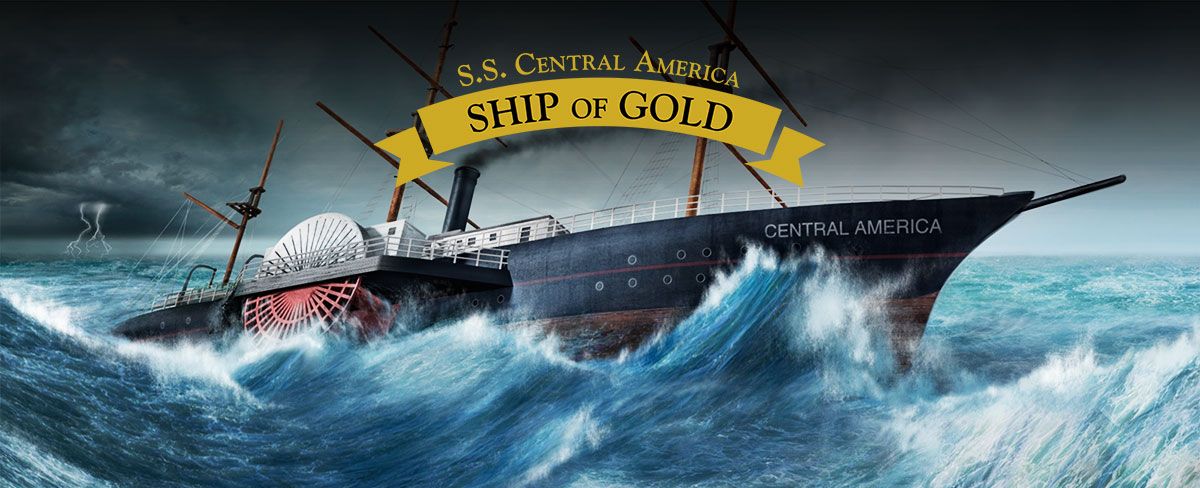
SS Central America : The Gold Rush and Gold Dust
James Wilson Marshall squinted against the sun as he stood ankle deep in the American River, cool water washing away the blistering heat of the California territory. The sunlight sparkled off the surface of the serene river. As he admired the stones lying near his feet, something caught the light and held it. Scratching his head, James took a knee and plunged his hand into the water. When his open palm crested the river’s surface, he couldn’t believe his eyes. Glittering yellow metal glinted back at him. One word whooped out of his lungs.
“Eureka!”
Marshall’s accidental discovery of gold on January 24, 1848 sparked the California Gold Rush of 1849, which forever changed the landscape of the Western U.S.A. Before James plucked that gold nugget from the flowing rivers of what would soon become the new El Dorado, California was barely a territory. It was a concession to the U.S. in the aftermath of the Mexican-American War as dictated by the Treaty of Guadalupe Hidalgo, signed only a few days after Marshall’s discovery and before word got out. But in December of 1848, when President James K. Polk announced to the world that there really was gold in California, the frenzy began.
People came from everywhere: Europe, Asia, Africa, Central America, Mexico, and that’s just to name a few. Whereas the population in California had been only a rough few hundred when Marshall struck gold, by the end of 1849, it had grown to over 100,000 prospectors, miners, hustlers, dream-chasers, treasure-hunters, and businessmen of all kinds. Gold was ripe for the taking and everyone wanted a piece. With the majority of the newly founded San Francisco’s population pulling gold nuggets and dust out of their pockets, they developed their own system of paying for goods and services. In the early days, gold miners carried vials of gold dust casually, weighing out pinches of the stuff to pay for anything they might need. It wasn’t the most reliable system, but it worked, and even in the later years of the Rush when California gold was shipped to New York to be minted into U.S. coinage, mostly the gold dust didn’t make the trip. Too small an amount to be worth it, they figured.
When the SS Central America, a U.S Mail Steamship in her fourth year of service, went down in a massive ocean storm 160 miles off the coast of South Carolina, she carried most of her passengers and all of their belongings to the floor of the ocean. Down there, in the bone-chilling temperatures and darkness, the perfect ecosystem for the preservation of precious objects was achieved.
Gold dust, gathered from the rivers of California in 1849, traded, weighed, and measured, gifted and placed in the traveling chest of a newly married couple, transported over sea, then land and sea again, was thrown off the side of the steamship in a desperate bid for life. It sank, sank, and finally laid in a bed of soft sand. One hundred and thirty years later, bright lights attached to a specialized recovery machine named NEMO exposed the dust, vacuumed it up and transported it to land. Weighed, inspected, and carefully contained, that gold dust was bought by 7k so that we could offer you the chance to own a portion of the history that made us.
7k is proud to present a Coin Drop a century and a half in the making...
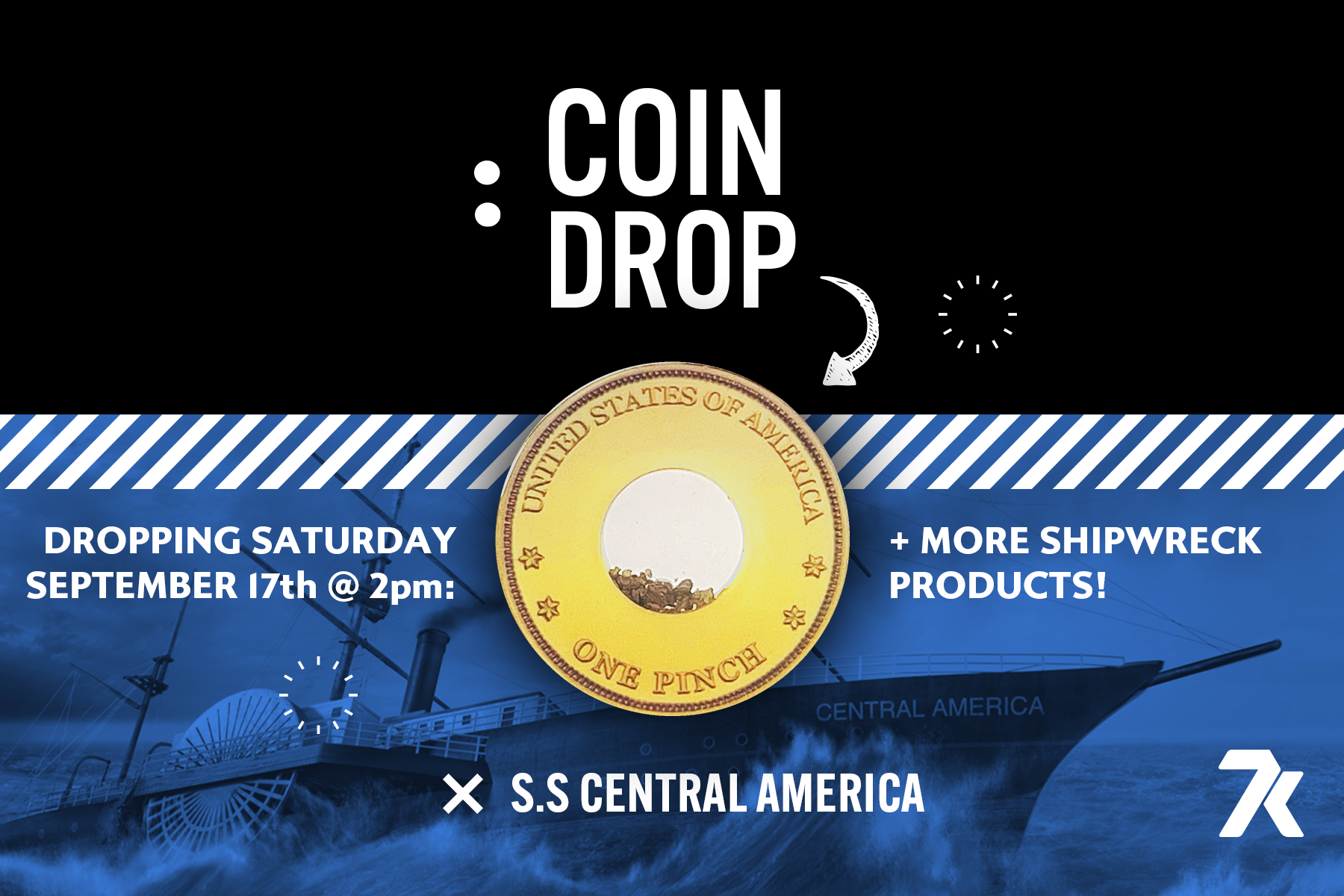

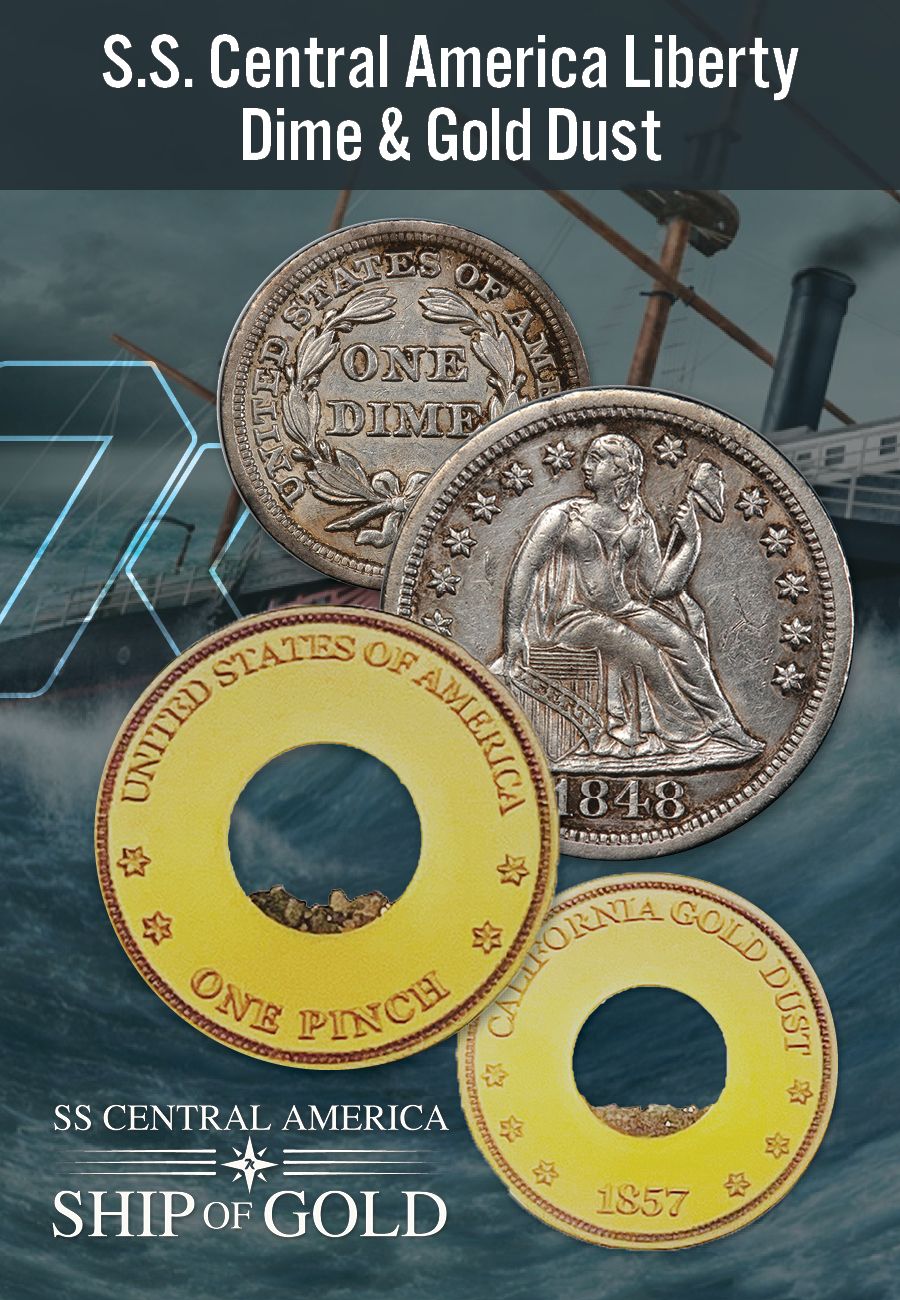
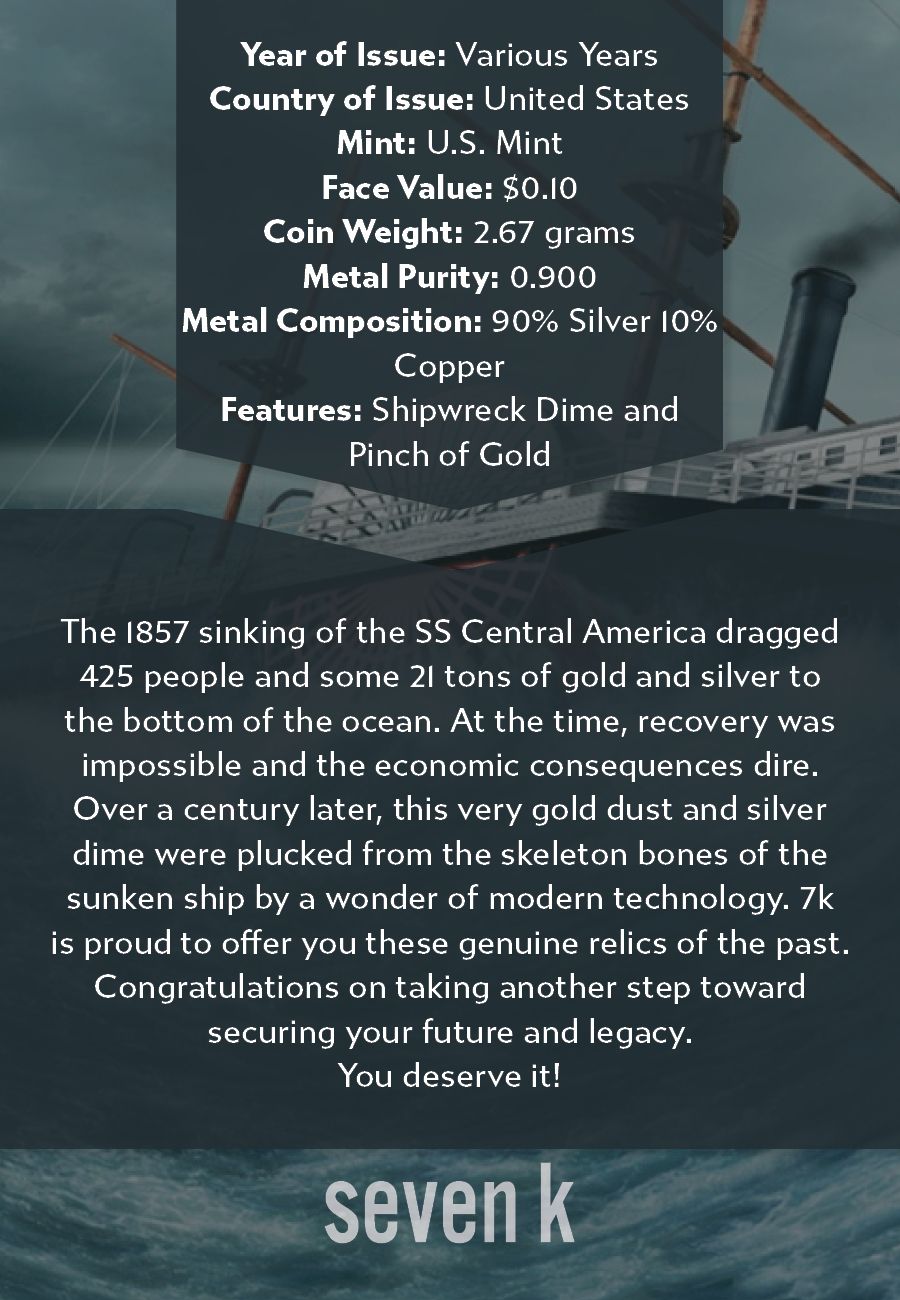
Coin #1:
S.S. Central America Liberty Dime & Gold Dust AG-Fine
Year of Issue: Various Years
Country of Issue: United States
Mint: U.S. Mint
Face Value: $0.10
Coin Weight: 2.67 grams
Metal Purity: 0.900
Metal Composition: 90% Silver 10% Copper
Features: Shipwreck Dime and Pinch of Gold
The 1857 sinking of the SS Central America dragged 425 people and some 21 tons of gold and silver to the bottom of the ocean. At the time, recovery was impossible and the economical consequences dire. Over a century later, this very gold dust and silver dime were plucked from the skeleton bones of the sunken ship by a wonder of modern technology. 7k is proud to offer you these genuine relics of the past.
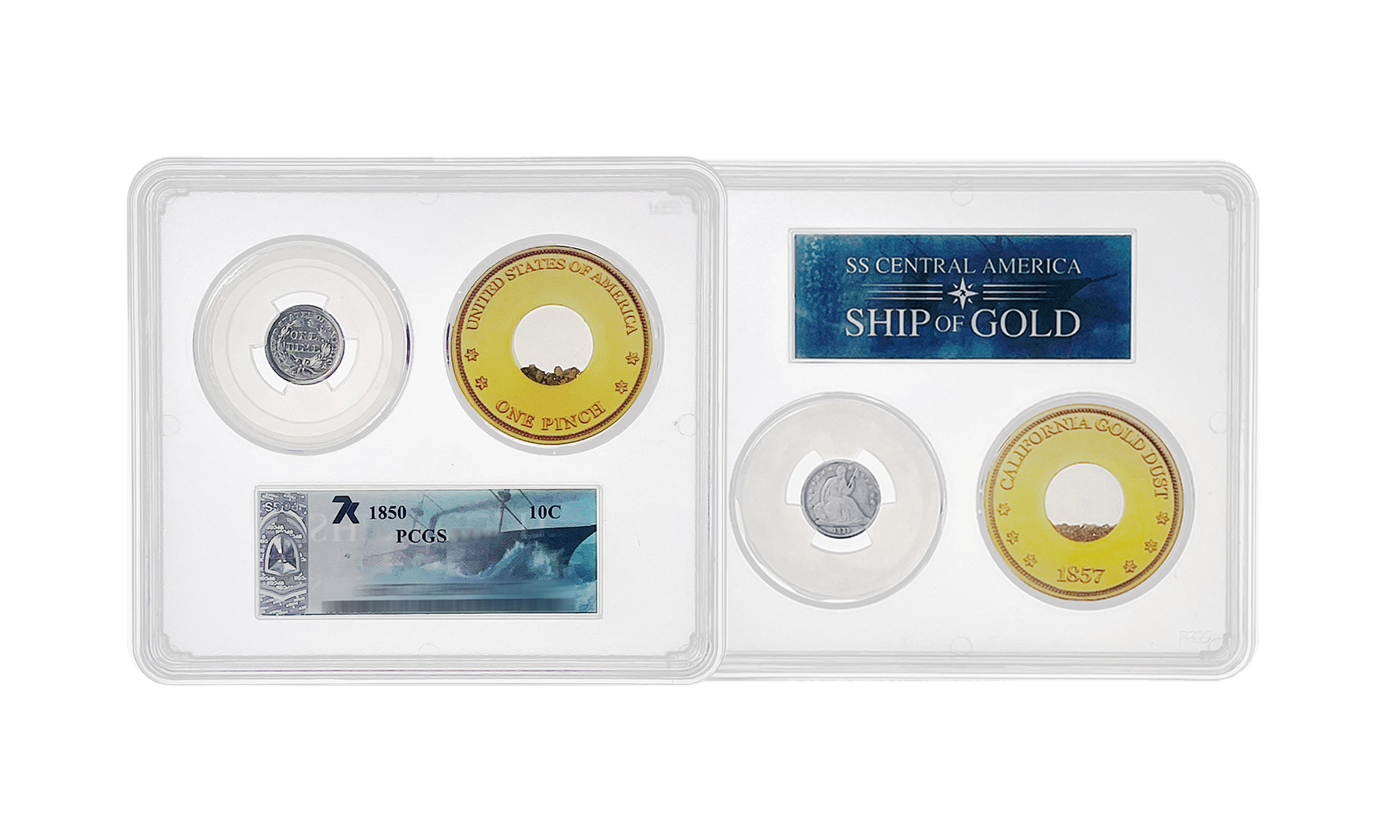
Coin #2:
S.S. Central America Liberty Dime & Gold Dust VF20 - VF35
Year of Issue: Various Years
Country of Issue: United States
Mint: U.S. Mint
Face Value: $0.10
Coin Weight: 2.67 grams
Metal Purity: 0.900
Metal Composition: 90% Silver 10% Copper
Features: Shipwreck Dime and Pinch of Gold
The 1857 sinking of the SS Central America dragged 425 people and some 21 tons of gold and silver to the bottom of the ocean. At the time, recovery was impossible and the economical consequences dire. Over a century later, this very gold dust and silver dime were plucked from the skeleton bones of the sunken ship by a wonder of modern technology. 7k is proud to offer you these genuine relics of the past.

Coin #3:
S.S. Central America Liberty Dime & Gold Dust XF40-XF45
Year of Issue: Various Years
Country of Issue: United States
Mint: U.S. Mint
Face Value: $0.10
Coin Weight: 2.67 grams
Metal Purity: 0.900
Metal Composition: 90% Silver 10% Copper
Features: Shipwreck Dime and Pinch of Gold
The 1857 sinking of the SS Central America dragged 425 people and some 21 tons of gold and silver to the bottom of the ocean. At the time, recovery was impossible and the economical consequences dire. Over a century later, this very gold dust and silver dime were plucked from the skeleton bones of the sunken ship by a wonder of modern technology. 7k is proud to offer you these genuine relics of the past.
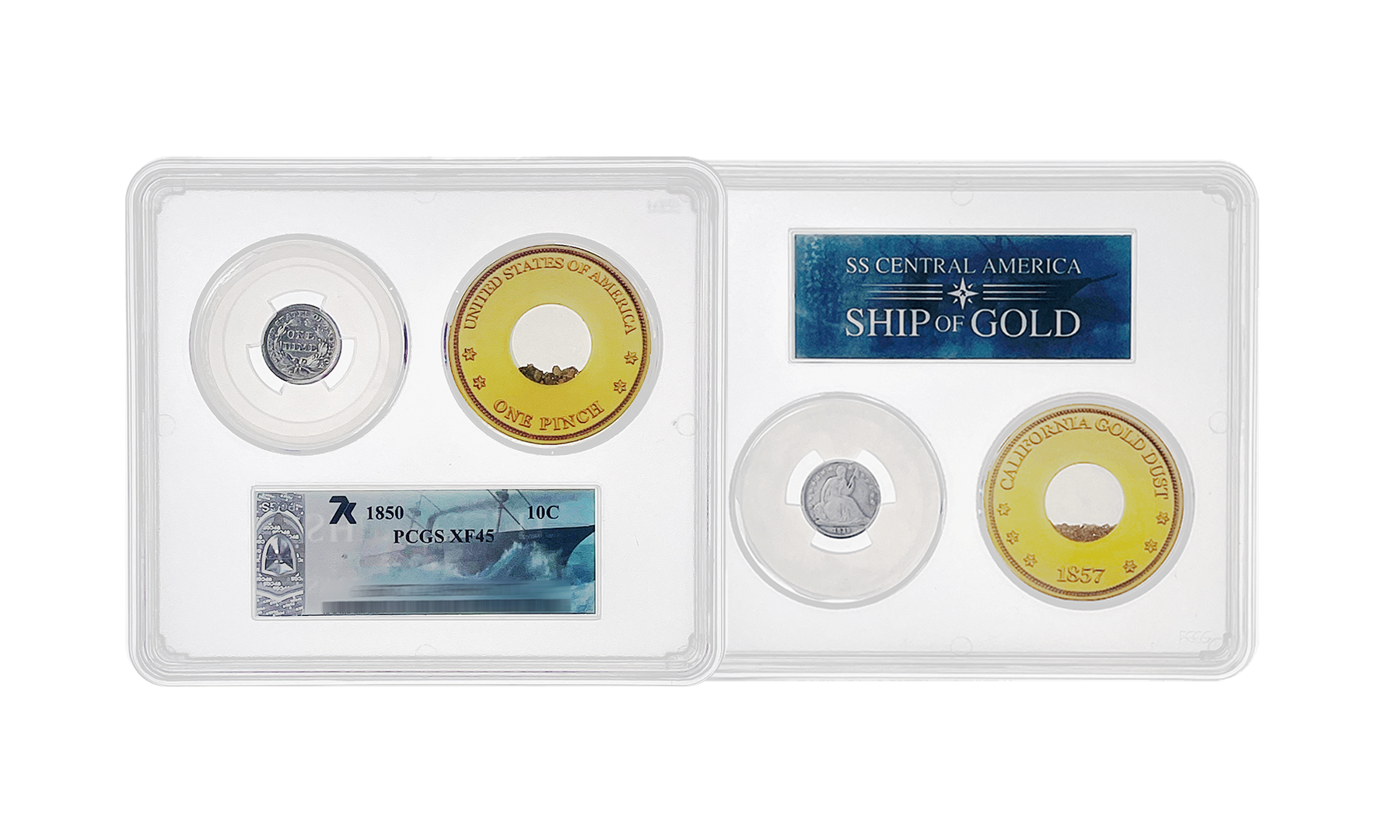
Want to Understand the Grading System Used?
Check out this guide on the PCGS website: https://www.pcgs.com/grades

